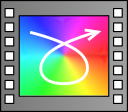The latest version of MotionBend features additional Rotation Dampening. Video from handheld cameras is often accidentally rotated, when moving forwards or backwards and especially when panning although it’s not always noticeable. Rotation Dampening adds additional smoothing to the rotation on top of the normal smoothing. Rotation Dampening is taken into account when generating correction to make the motion more consistent. Most shakey videos will look better with Rotation Dampening but you can disable it if you prefer.
Read more →
The latest version of MotionBend features additional Rotation Dampening. Video from handheld cameras is often accidentally rotated, when moving forwards or backwards and especially when panning although it’s not always noticeable. Rotation Dampening adds additional smoothing to the rotation on top of the normal smoothing. Rotation Dampening is taken into account when generating correction to make the motion more consistent. Most shakey videos will look better with Rotation Dampening but you can disable it if you prefer.
Read more →
We have a big list of ideas for features and improvements for MotionBend, that we hope will make it the ultimate stabilization tool. We are constantly evaluating each idea to decide how difficult it would be to implement and its usefulness. We have a lot of new ideas too so the list is always growing. There are also suggestions from our users and other interested parties. When many people recommend the same feature it goes up in priority on our list. The number one request was for a plugin.

Read more →
Virtual Reality (VR) camera is a fairly modern term for what has long been known as an omnidirectional camera. VR Head Mounted Displays (HMD) such as the HTC Vive, Oculus Rift or Google Cardboard have been generating interest for synthetic environments but now people are looking to create live content so they need to be able to see in all directions in the real world. Omnidirectional cameras can capture views in all directions simultaneously. In this post we will use the terms VR camera and omnidirectional camera interchangeably. Some VR cameras don’t actually cover 360 degrees in both horizontal and vertical directions, only capturing 360 degrees on one axis and a limited view angle in the other. Most information about VR cameras only talks about “360 degree video” and gaps in the viewing sphere are not mentioned.
Read more →
In the latest MotionBend 1.5 we have completely rewritten our motion analysis module. The basic method is more or less the same but we have switched to newer, faster techniques; we have investigated and implemented several speed ups in areas that are traditionally slow; we have optimized code, made short cuts, streamlined data flow and we’ve improved our formats for faster data access.
Read more →